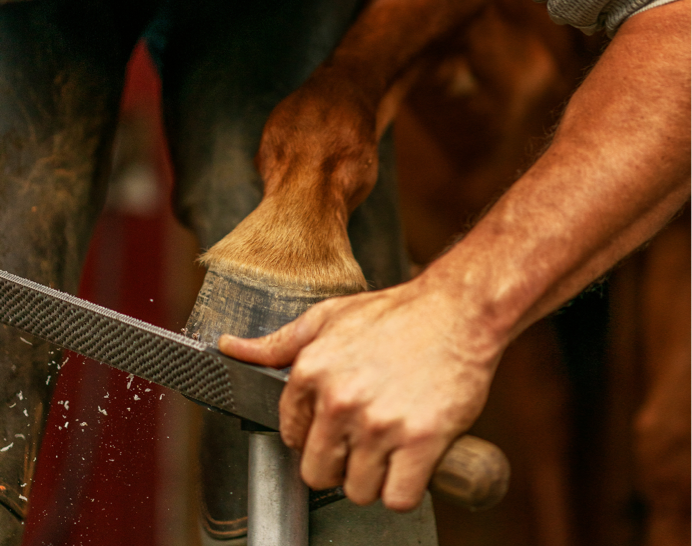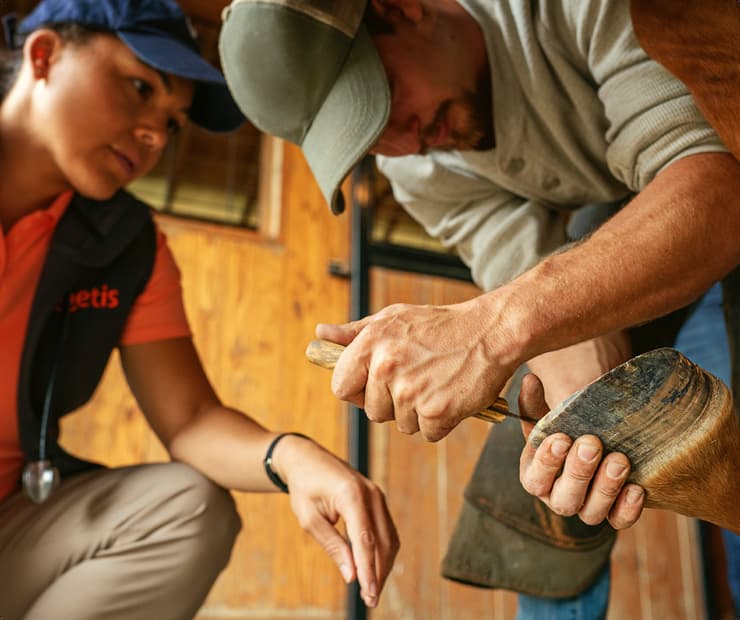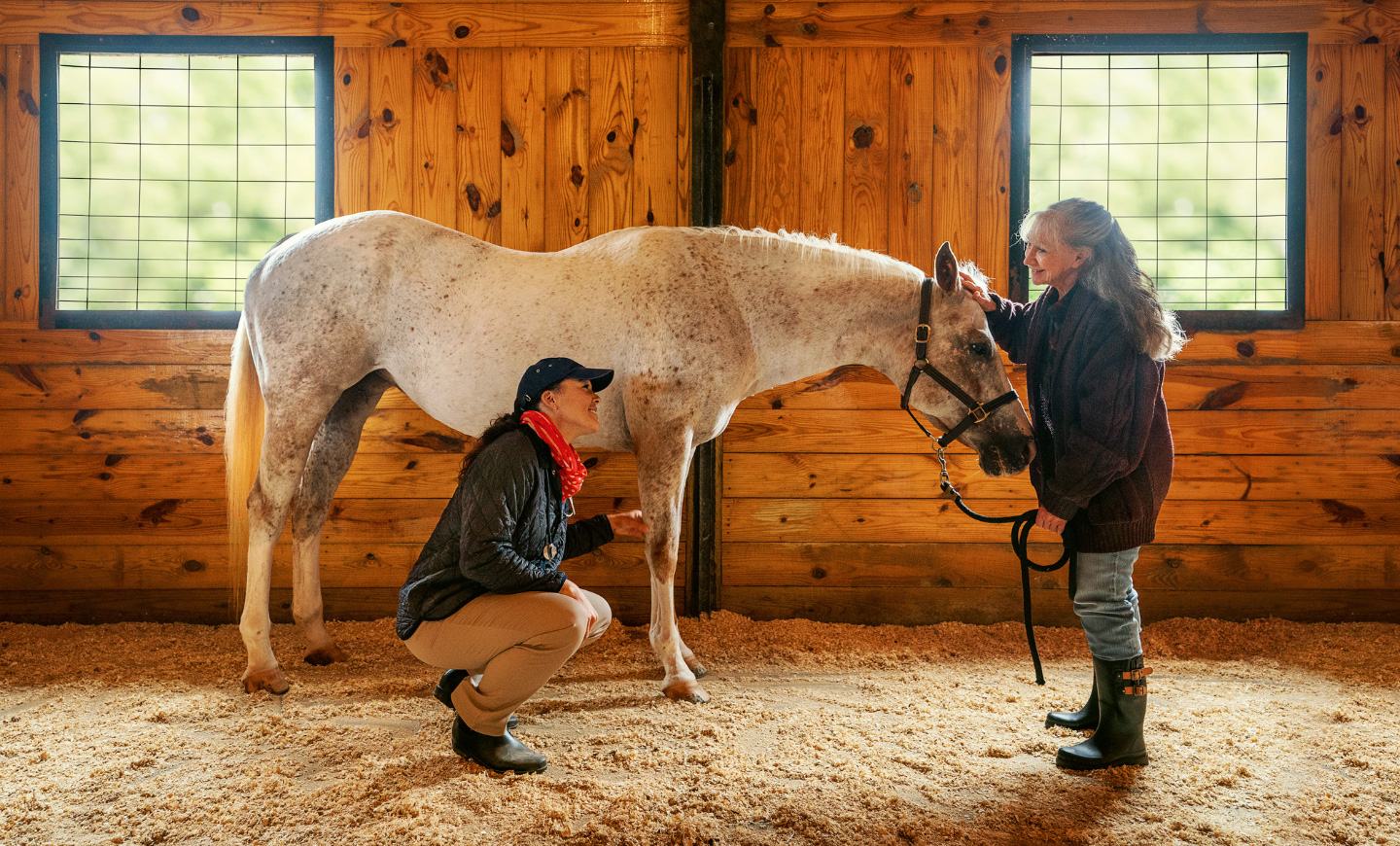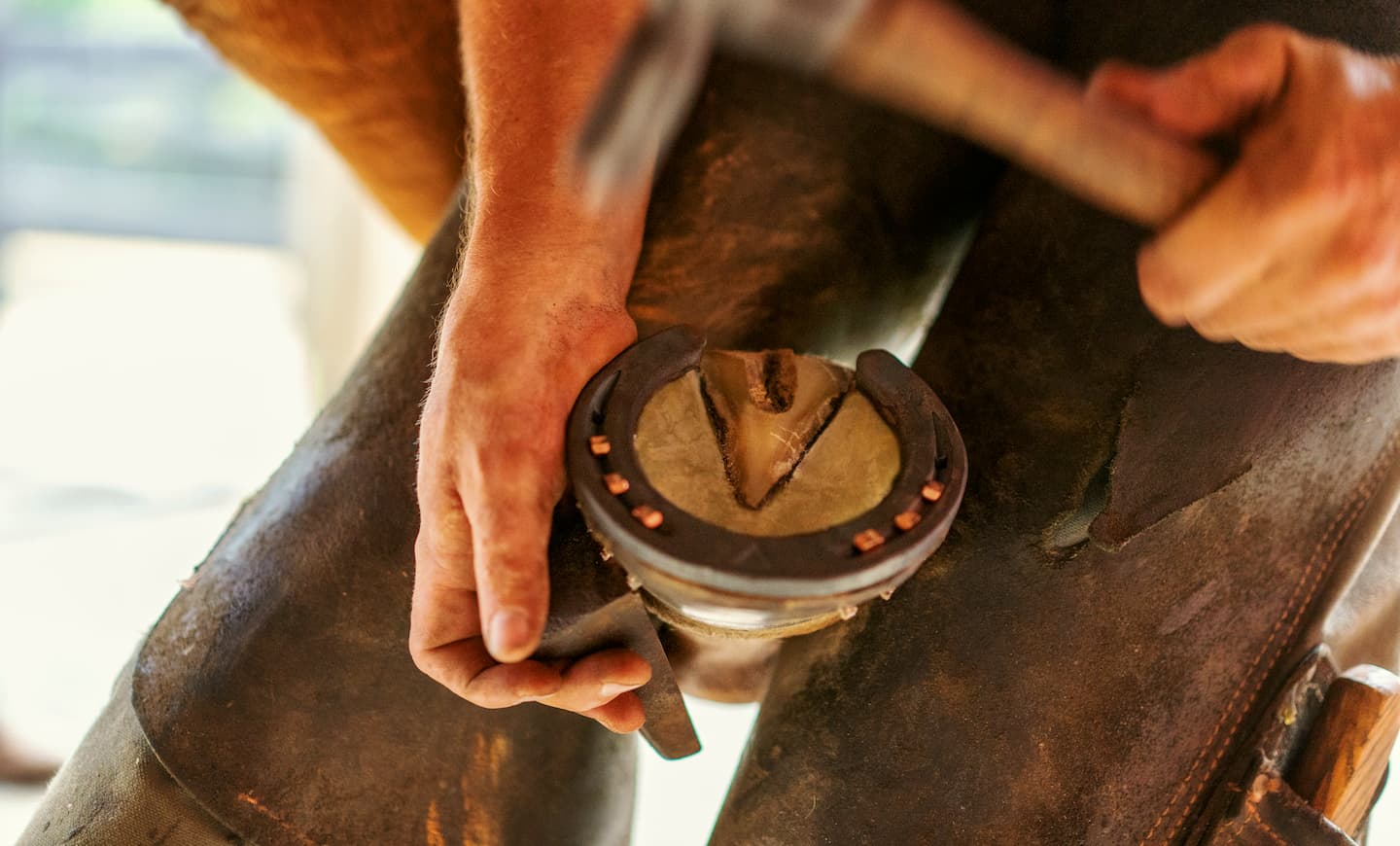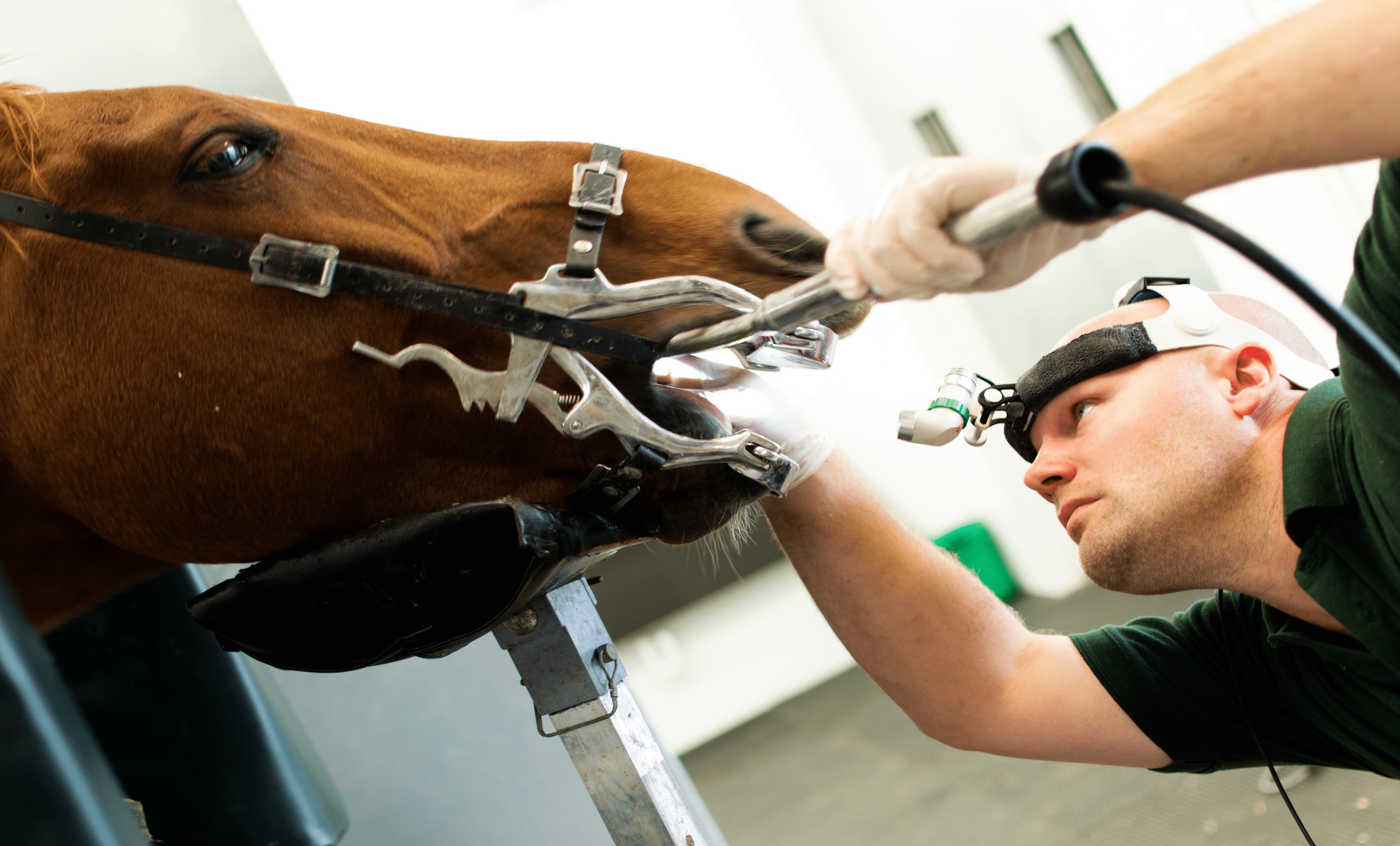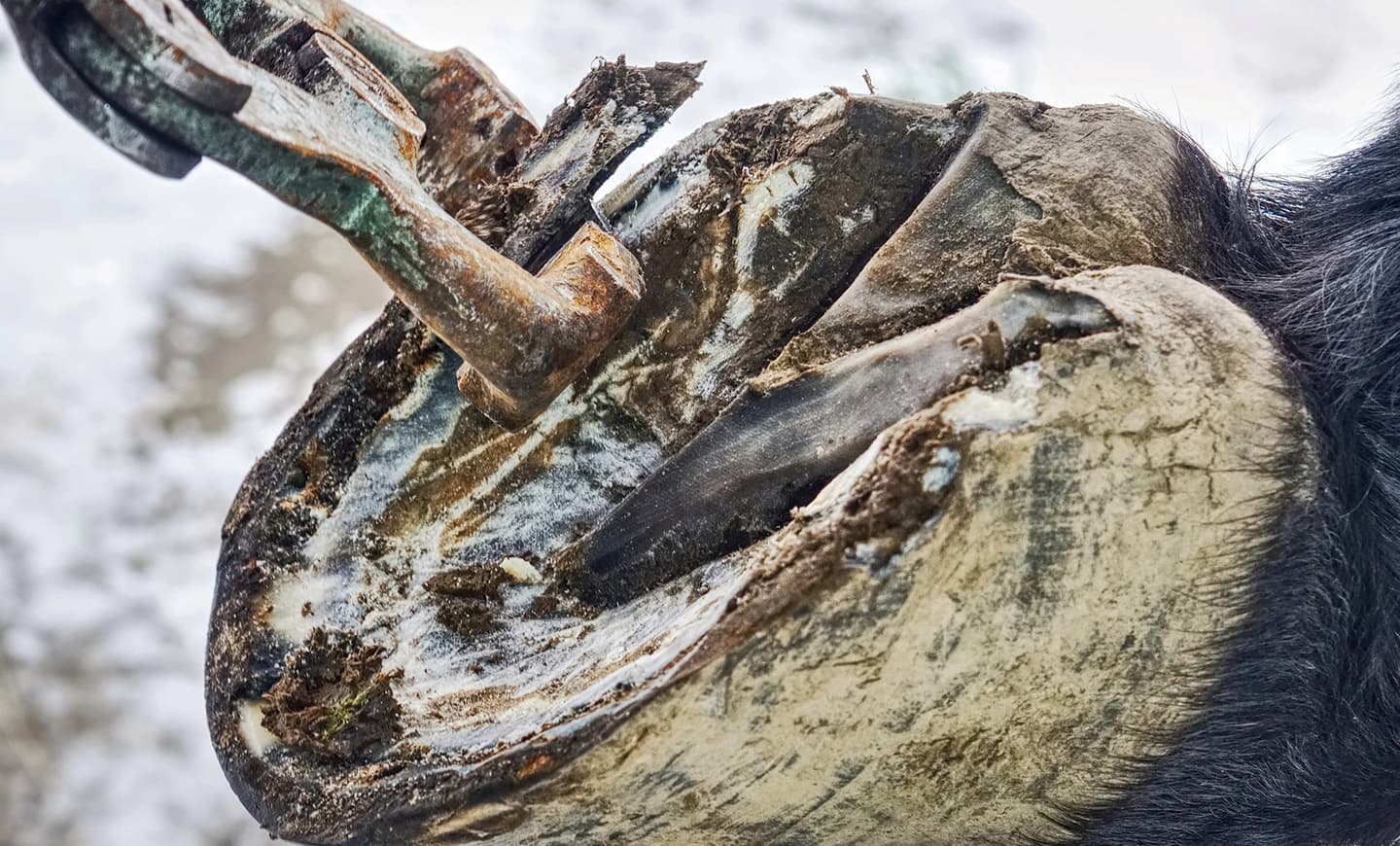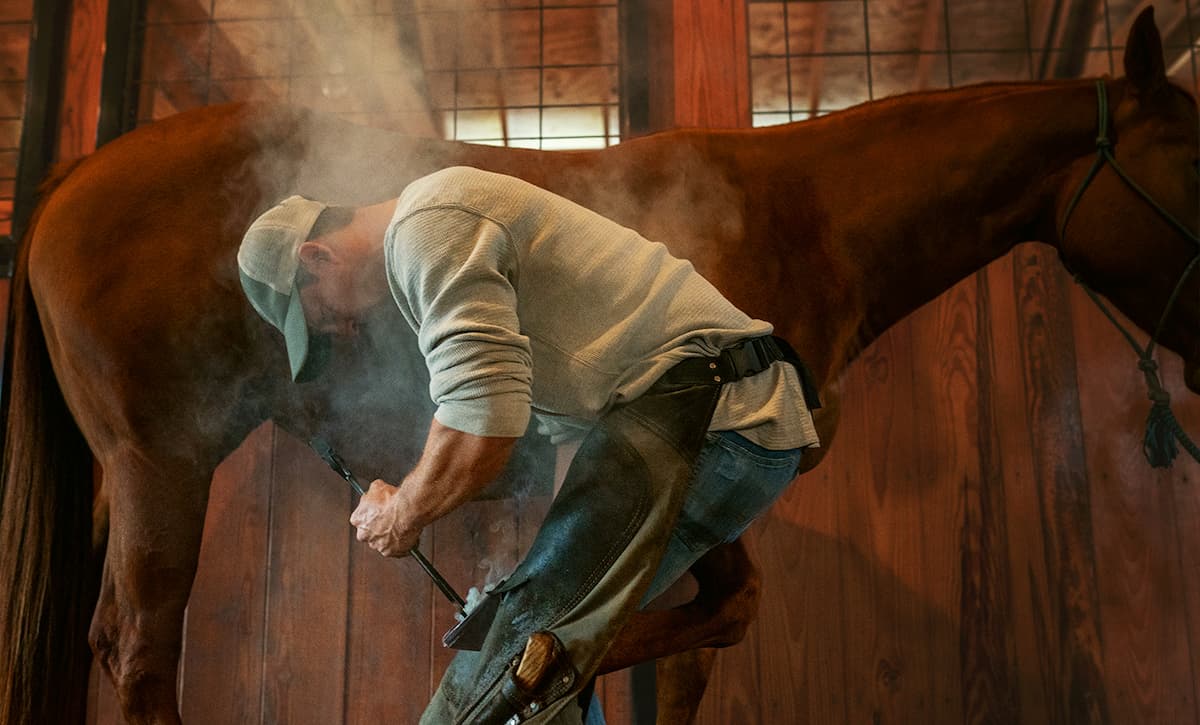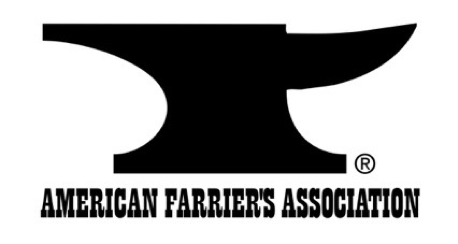Educational resources for farriers and their clients
A helping hand when you need it
Dormosedan® Gel is designed to help take the edge off nervous horses in certain care and management
situations. As a farrier, if working with an unsafe horse, consider advising your client to speak with their
veterinarian about how to acquire a prescription for Dormosedan Gel ahead of your next appointment.
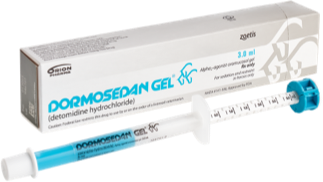
Dormosedan® Gel
(detomidine hydrochloride)
See how Dormosedan® Gel works
“Dormosedan Gel is useful for husbandry procedures and can be administered without having a veterinarian present. Its oral gel formulation is both convenient and safe for horse owners.”
- Rachel Gardner, DVM, Diplomate ACVIM
We would love to hear your Dormosedan® Gel success story
We proudly support these farrier
organizations
FAQs
What are some important aspects of farrier safety for clients (horse owners) to consider?
2. Proper Preparation: Merely picking up and putting down a horse’s feet is not enough preparation for farrier work. Farriers need to hold up the horse’s feet for extended periods, position the hoof between their legs, move the foot forward onto a hoof stand, and more. Therefore, it is crucial to provide the horse with groundwork and preparatory feet-handling, preferably by someone experienced in horse training. This is important not only for young horses but also for adult horses with problematic behavior.
3. Savvy Horse Handling: Being a knowledgeable horse handler is more important for farrier safety than many people realize. There are nuances to consider, such as which side to stand on depending on whether the farrier is working on the front or hind end, how to hold the lead rope, and more. These details can make a significant difference in keeping the farrier safe and preventing injuries. Additionally, handlers should stay focused and avoid distractions, like their phones, when handling horses for the farrier.
By being mindful of these considerations, clients can contribute to a safe working environment for both the farrier and their horse.
What else can horse owners do to help keep farriers safe and allow them to do their best work?
To ensure a smooth and successful farrier appointment, there are a few steps one can take. If a horse has been stalled all day, it may be beneficial to provide some exercise beforehand, if it's safe to do so. Even a short session of hand-walking or engaging in simple groundwork can help the horse stretch his legs and use his mind, helping with a calm demeanor during the farrier’s visit.
It's also important to minimize disruptions during the appointment. Avoid activities like feeding the other horses in the barn or turning them out while the farrier is working.
Additionally, creating a safe workspace by keeping dogs away and using common sense when handling equipment or performing tasks that might spook the horse is crucial. If there is a need to walk another horse by the one currently being worked on, it's always advisable to seek permission from the farrier first.
What else do farriers wish clients knew?
Horses that don't stand safely and quietly during hoof trimming and shoeing can negatively affect the quality of the work done by the farrier. When a horse behaves poorly, it becomes difficult for the hoof care professional to perform a balanced trim or fit the shoe properly.
Farriers play a vital role as a part of a horse’s care team and are excellent resources for evaluating how a horse is feeling during their regular appointments. For instance, if a normally well-behaved horse becomes restless and resistant during trimming or shoeing, it might be a sign of soreness in their joints or muscles. When a farrier observes such changes in behavior or posture, it's an ideal opportunity for clients to involve their veterinarian for a physical or lameness examination. By working together, the farrier and veterinarian can ensure the horse receives comprehensive care and address any foot health issues.
IMPORTANT SAFETY INFORMATION
DORMOSEDAN GEL
Do not use DORMOSEDAN GEL in horses with pre-existing atrioventricular (AV) or sinoatrial (SA) block, with severe coronary insufficiency, cerebrovascular disease, respiratory disease, or chronic renal failure. Do not use in anesthetized or sedated horses, or in conditions of shock, severe debilitation or stress due to extreme heat, cold, fatigue or high altitude. Do not use in horses intended for human consumption. Handle gel-dosing syringes with caution to avoid direct exposure to skin, eyes or mouth. See full Prescribing Information, here.
DORMOSEDAN STERILE SOLUTION
Do not use DORMOSEDAN STERILE SOLUTION in horses with pre-existing atrioventricular (AV) or sinoatrial (SA) block, with severe coronary insufficiency, cerebrovascular disease, respiratory disease, or chronic renal failure. Intravenous potentiated sulfonamides should not be used in anesthetized or sedated horses. Careful consideration should be given to horses approaching or in endotoxic or traumatic shock, to horses with advanced liver or kidney disease, or to horses under stress from extreme heat, cold, fatigue, or high altitude. Do not use in horses intended for human consumption. Handle dosing syringes with caution to avoid direct exposure to skin, eyes or mouth. See full Prescribing Information, here.
TORBUGESIC
Use TORBUGESIC with caution with other sedative or analgesic drugs as these are likely to produce additive effects. Do not use in breeding horses, weanlings, or foals. See full Prescribing Information, here.
 Visit veterinary professionals site
Visit veterinary professionals site
